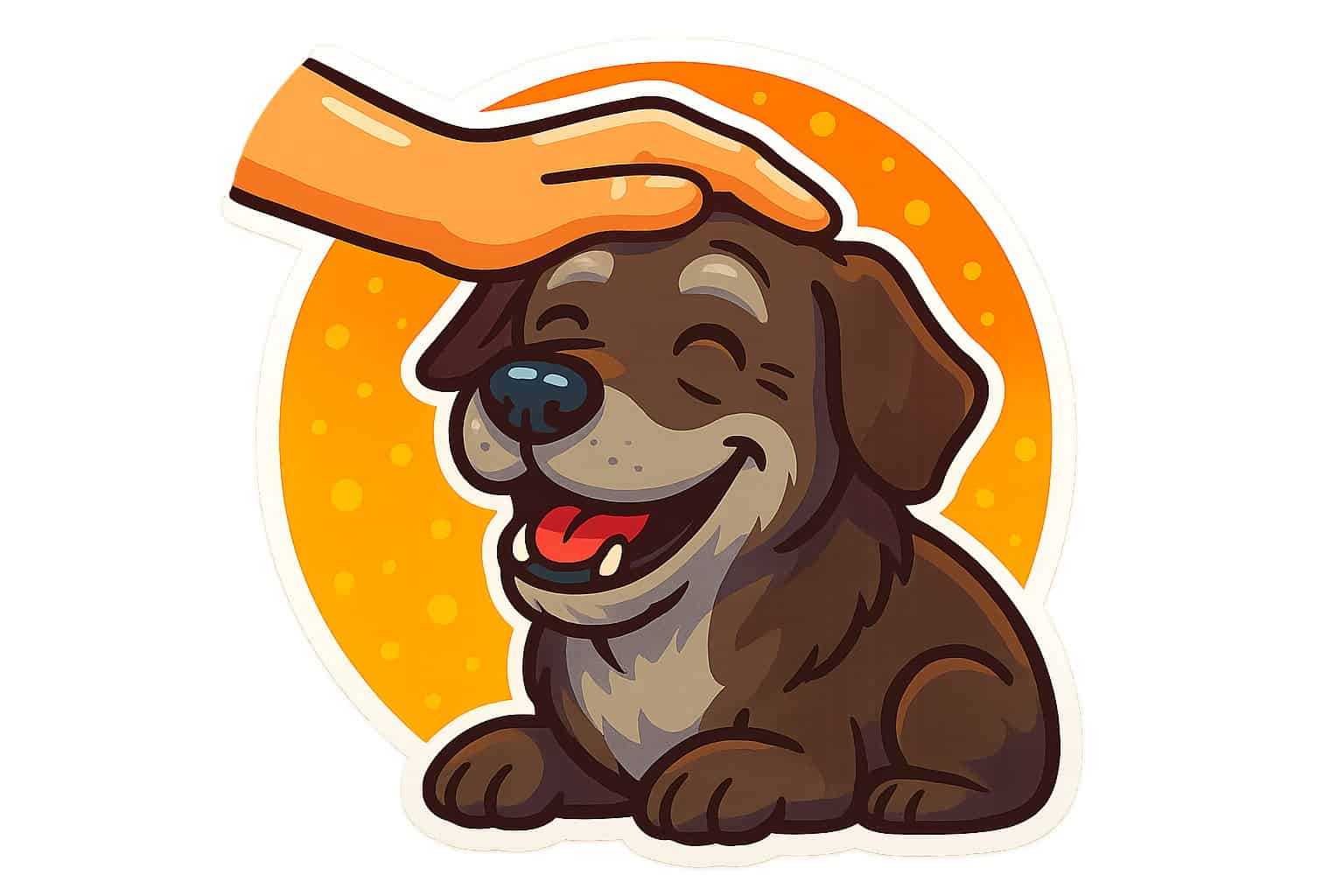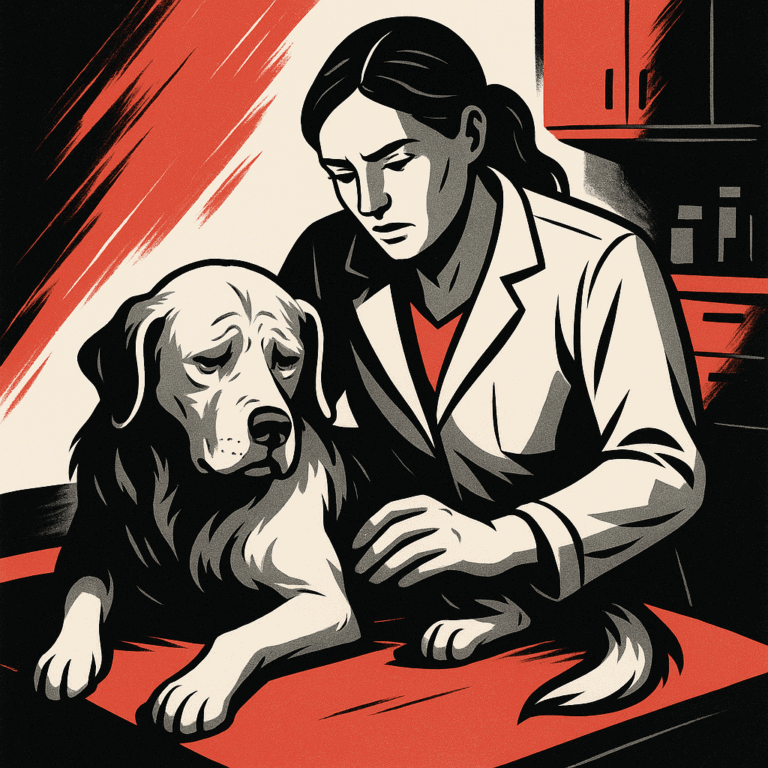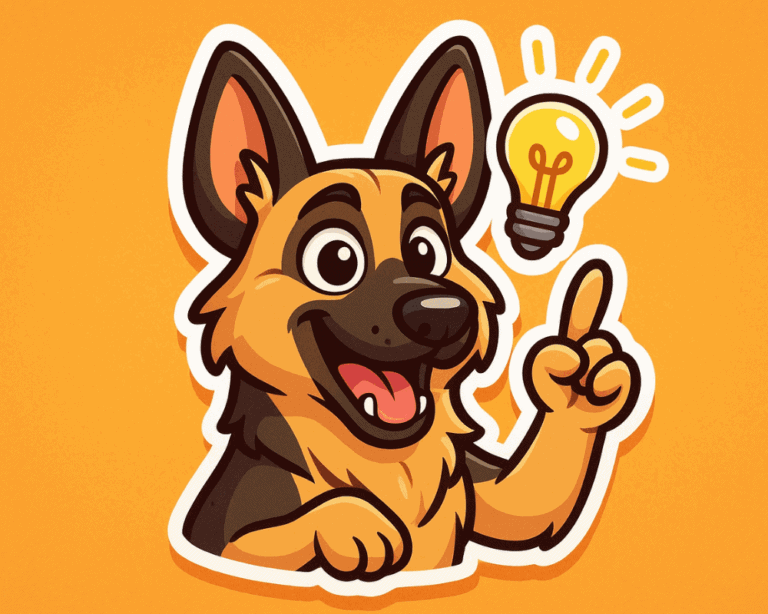9 Ways to Show Your Old Dog Love Until the Very End

Your senior dog has given you years of unconditional love, tail wags, and loyal companionship. Now that those once-bright eyes might be a little cloudy and those eager steps have slowed to a gentle pace, it’s your turn to show that same devotion back.
Caring for an aging dog means adapting to meet their changing physical and emotional needs. These changes might show up as your dog needing help getting up or seeming more anxious when you leave.
Maybe you’ve noticed your furry friend needs a little extra help getting up from their favorite napping spot. Or perhaps they seem more anxious when you leave the house.
These changes are completely normal. With some thoughtful tweaks to their routine and environment, you can help your senior companion feel comfortable and loved.
From creating a cozy setup to gentle exercises, there are so many ways to support your dog through their golden years. Small changes like adjusting their diet, providing mental stimulation, and being extra patient with their slower pace can really improve their quality of life.
1) Create a Cozy, Orthopedic Bed for Joint Relief and Comfort
Maybe you’ve spotted your senior dog struggling to get up from their old bed. Those stiff joints need extra support now, no question.
An orthopedic bed with memory foam can make a huge difference. The foam molds to your dog’s body and cushions their joints while they rest.
Look for beds with several foam layers. The top should be soft memory foam, while the bottom needs to be firmer for support.
Think about the size. Your dog should be able to stretch out without feeling cramped.
Waterproof covers are a lifesaver for older dogs. Accidents are more common, and you want to keep that expensive foam dry.
Place the bed away from drafts and cold floors. A warm, quiet spot helps your dog relax better, maybe near your favorite chair so they can still be close to you.
If your dog avoids their new bed at first, don’t panic. Some dogs need time to adjust. Toss a favorite blanket on top to make it smell familiar.
2) Stick to a Consistent Daily Routine to Reduce Stress
Your senior dog finds comfort in knowing what comes next. Just like you might feel anxious when your schedule gets thrown off, your older pup needs predictability more than ever.
Dogs are creatures of habit, and this becomes even more important as they age. A steady routine helps your senior dog feel secure and confident in their daily life.
Try to feed your dog at the same times each day. This simple step reduces anxiety and helps their body prepare for meals.
Keep walk times consistent too. Your senior dog’s joints might be stiff, but they’ll feel better knowing when their gentle exercise is coming.
Stick to regular bedtimes and wake-up times. Older dogs often sleep more, so a predictable sleep schedule supports their natural rhythms.
Even bathroom breaks work better on schedule. Your aging dog will appreciate not having to guess when their next potty opportunity arrives.
Maybe you’ve noticed your dog waiting by their food bowl at dinner time? That’s their internal clock working with your routine.
If you need to change something, do it gradually. Small adjustments over several days work better than sudden shifts for senior dogs.
3) Schedule Regular Vet Check-Ups for Seniors
Your senior dog needs more frequent vet visits than younger pups. Think of it like your own doctor visits—the older you get, the more check-ups you need.
Most vets recommend seeing your senior dog every six months instead of once a year. This might seem like a lot, but catching problems early can spare your dog from pain and discomfort.
During these visits, your vet checks for age-related issues that can sneak up quietly. Things like arthritis, kidney problems, or heart conditions often start small but grow bigger without treatment.
Senior check-ups include special blood work to check organ function. Your vet might also examine your dog’s teeth more carefully since dental problems become common with age.
Maybe you’ve noticed your dog moving slower or drinking more water? These visits help figure out if these changes are normal aging or something that needs attention.
4) Use Gentle Massage to Soothe Aching Muscles
Your senior dog’s muscles and joints probably ache more than they used to. Just like you might enjoy a shoulder rub after a long day, your old dog will love gentle massage too.
Start with light touches along your dog’s neck and shoulders. Use slow, circular motions with your fingertips.
Watch your dog’s reaction. Most dogs will lean into the massage or even close their eyes in contentment.
Focus on areas where your dog seems stiff or sore. The hips, back legs, and shoulders are common trouble spots for older dogs.
Apply gentle pressure, but never push hard enough to cause discomfort. Massage isn’t just about pain relief—it’s also precious bonding time.
Try massaging your dog for just 5-10 minutes at first. You can do this while watching TV together or before bedtime.
Many dogs find massage so relaxing that they fall asleep during the session. If your dog seems uncomfortable or pulls away, stop immediately.
Some days might be better than others for massage, and that’s perfectly normal.
5) Offer Age-Appropriate, Nutrient-Rich Food
Your senior dog’s body works differently now than it did in their younger years. Just like people, older pups need special nutrition.
Senior dogs typically need food designed for dogs seven years and older. These foods have different amounts of protein, fat, and fiber than regular adult dog food.
Have you noticed your dog moving a bit slower lately? Senior dog foods often include ingredients that support joint health and mobility.
They also help with brain function and digestion. Look for foods approved by AAFCO when shopping.
Check that real meat is the first ingredient listed on the bag. Your aging companion might not need as many calories as before.
Senior formulas help prevent weight gain while still providing all the nutrients your dog needs. If your dog has always been picky about food, don’t worry.
Many brands make both dry kibble and wet food options for senior dogs. You can even mix them together for extra flavor.
Good nutrition helps your senior dog feel their best during their golden years.
6) Take Shorter, More Frequent Walks
Your senior dog still needs exercise, but their aging body can’t handle what it used to. Think of it like switching from marathon runs to pleasant neighborhood strolls.
Instead of one long walk, try breaking it into two or three shorter ones throughout the day. This gives your dog’s joints time to rest between activities.
For a 14-year-old dog, aim for walks around half a mile to one mile total per day. Split this into manageable chunks that match your dog’s energy levels.
Watch for signs that your dog needs a break. Heavy panting, lagging behind, or sitting down during walks are clear signals to slow down or head home.
Maybe you’ve noticed your dog seems more eager at the start of shorter walks? That’s because they’re not dreading a long, tiring journey ahead.
Consider the weather too. Hot pavement can hurt aging paw pads, and cold weather might make arthritic joints stiffer.
Let your dog set the pace. Some days they’ll want to sniff every tree, other days they’ll prefer a gentle stroll.
7) Maintain a Calm Environment to Ease Anxiety
Your senior dog’s hearing might not be what it used to be, but sudden loud sounds can still startle them. Think of it like being woken from a deep nap by a fire alarm—jarring, right?
Keep your home quieter during your dog’s golden years. Lower the TV volume and avoid slamming doors or cabinets.
If you have young children, remind them to use their indoor voices around grandpa dog. Routine becomes even more important as dogs age.
Try to feed, walk, and play with your dog at the same times each day. This predictability helps reduce anxiety because your dog knows what to expect.
When guests visit, give your dog a heads up. Let them sniff around the entrance before people arrive.
You can even create a quiet retreat space where your dog can escape if the activity becomes overwhelming. Consider using soft background music or white noise to mask sudden sounds from outside.
Some dogs find classical music particularly soothing—it’s like a spa day for their ears.
8) Show Extra Patience and Adapt Your Interactions
Your senior dog may not bounce up the stairs like they used to. They might not come running when you call their name either.
This isn’t stubbornness. Your dog is simply dealing with aging joints or hearing loss that comes naturally with time.
Maybe you’ve noticed your dog takes longer to get up from their favorite nap spot. Give them those extra moments without rushing.
Your patience means everything to them. If your dog seems to ignore you, they might not actually hear you anymore.
Try getting closer before giving commands or gently touching them to get their attention. Using hand signals alongside verbal commands helps dogs with hearing loss understand what you want.
Should you notice your dog startling more easily, approach them from the front where they can see you coming. This prevents unnecessary stress.
Your tone of voice still matters, even if they can’t hear as well. Dogs pick up on vibrations and your body language more than you might think.
Remember that your old friend is doing their best with the body they have now.
9) Add Joint Supplements After Vet Approval
Maybe you’ve noticed your senior dog moving a bit slower up the stairs these days. Those creaky joints are telling a story, and joint supplements might help write a more comfortable chapter.
Glucosamine and chondroitin are like the dynamic duo of joint health. These ingredients work together to support your dog’s cartilage and reduce stiffness that comes with age.
You’ll find these supplements everywhere, but not all are created equal. Some contain additional ingredients like MSM or omega-3 fatty acids that can boost the benefits.
Should you notice your dog hesitating before jumping on the couch, it might be time for a vet chat. Your veterinarian can recommend the right supplement and dosage for your specific pup.
I always tell dog parents to think of joint supplements as a daily vitamin routine. Just like you might take calcium for your bones, your senior dog can benefit from this extra joint support.
These aren’t magic pills that work overnight. Give them a few weeks to show results, and keep realistic expectations about what they can achieve.
Understand Your Senior Dog’s Changing Needs
Your senior dog faces physical changes that affect their daily comfort. Emotional shifts can deepen their bond with you.
Recognizing these changes helps you provide the best care during their golden years.
Common Health Changes in Older Dogs
Your dog’s body works differently now than it did in their younger years. Just like people, dogs experience wear and tear as they age.
Joint pain and stiffness are among the most common issues. You might notice your dog takes longer to get up from their bed.
They may hesitate before jumping onto the couch or climbing stairs. Vision and hearing changes happen gradually.
Your dog might not see you wave from across the room anymore. They could sleep through sounds that used to wake them instantly.
Here are key physical changes to watch for:
- Slower movement, especially in the morning
- Gray hair around the muzzle and eyes
- More frequent napping during the day
- Changes in appetite or eating habits
- Increased thirst and urination
Cognitive changes can also occur. Your dog might seem confused in familiar places.
They could forget their house training occasionally or not respond to their name right away.
These changes don’t mean your dog is suffering. They simply need different support now.
Emotional Well-Being and Attachment
Senior dogs often become more attached to their families. Have you noticed your dog following you from room to room more than before?
This increased closeness is completely normal. Your dog finds comfort in your presence as their world becomes less predictable.
As dogs age, their anxiety can increase. New situations that never bothered your dog before might now cause stress.
Loud noises, unfamiliar visitors, or changes in routine can feel overwhelming. Your dog may also show signs of separation anxiety, even if they never had this issue before.
They might pace when you grab your keys or seem extra excited when you return home. Sleep patterns change too.
Your dog might sleep more during the day but feel restless at night. Some dogs develop sundowning, where they become confused or anxious in the evening.
How to Strengthen Your Bond in the Golden Years
Your senior dog’s slower pace creates new opportunities for deeper connection. Gentle routines and activities start to matter more.
These golden years offer special moments to show love through comfort and shared experiences. It’s a chance to really tune into what your dog needs.
Everyday Routines That Bring Comfort
Does your old dog seem to find more joy in simple daily rituals? You’re absolutely right to notice this change.
Senior dogs thrive on predictable routines that make them feel secure. Your morning coffee ritual can become their favorite part of the day if you invite them to sit beside you.
Try creating a gentle morning routine together. Start with slow stretches while your dog watches from their bed.
Then move to a quiet breakfast where you both take your time. Evening routines work magic too.
Maybe you’ve noticed your dog waiting by your favorite chair each night? This isn’t a coincidence—they’re seeking that peaceful connection.
Set up a cozy spot where you can both relax. A soft blanket for them, your book or TV remote for you.
These quiet moments together speak volumes. Your consistent presence during meals, bedtime, and wake-up times creates a foundation of trust.
Even something as simple as talking to them while you brush your teeth becomes a bonding moment. It’s funny how those little things end up meaning the most.
What Can You Do When Your Dog Slows Down?
What activities still work when your dog isn’t as quick as before? You might be surprised by how simple the answer really is.
Indoor activities become your go-to. Try hiding treats in one room and let your dog sniff them out.
Brush your dog gently, turning it into a relaxing massage session. Go over easy commands they already know for a quick training refresher.
Snap a few photos while they lounge in their favorite sunny spot. Sometimes you’ll catch them looking extra adorable.
Short car rides to quiet places can make a big difference. Your dog doesn’t need to hike—just sitting together somewhere new gives them something interesting to experience.
Outdoor time can still be special. Instead of long walks, sit together in the yard or on a park bench.
Let your dog wander and explore at their own pace. You get to breathe in the fresh air while they enjoy the world on their terms.
Try “sniffing walks” where the distance doesn’t matter at all. Your dog can check out every scent, and you might notice things in the neighborhood you never saw before. Isn’t it funny how slowing down can show you a whole new side of life?






